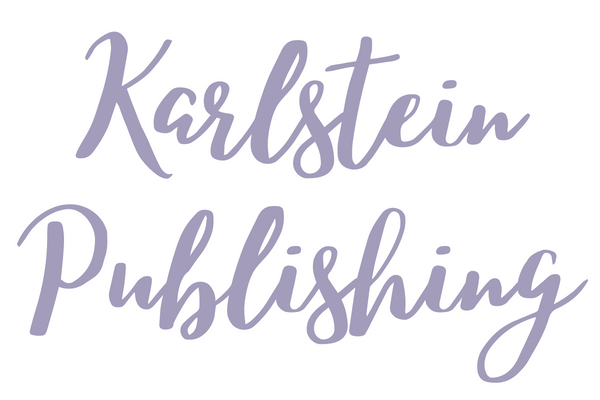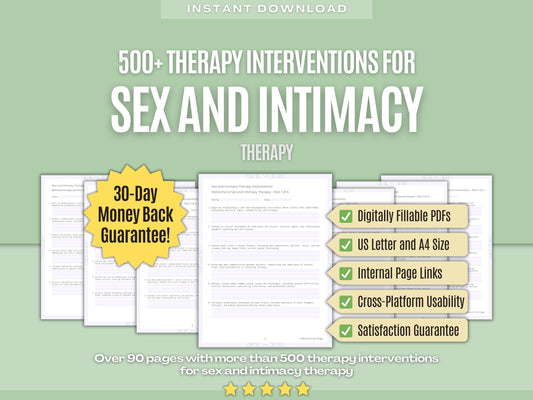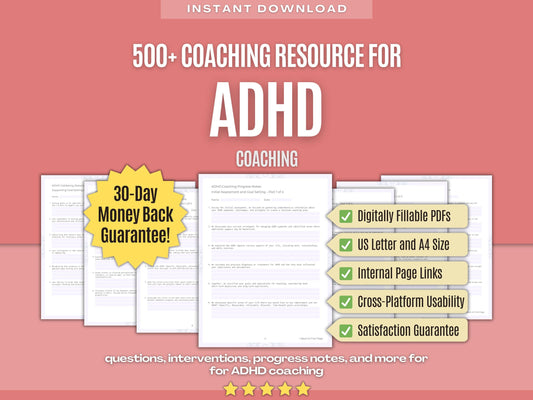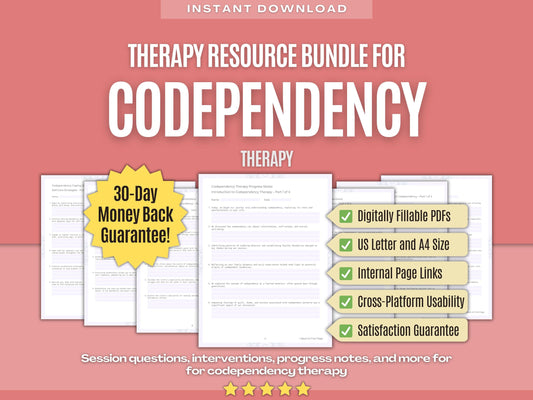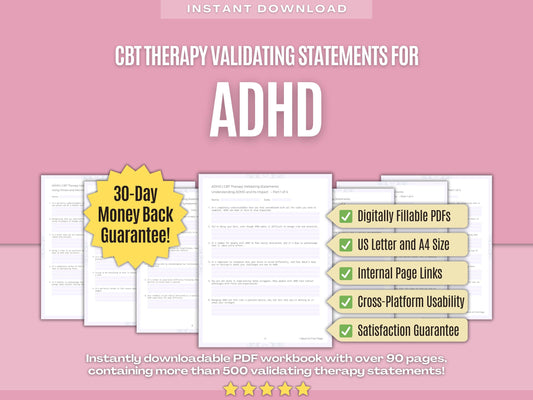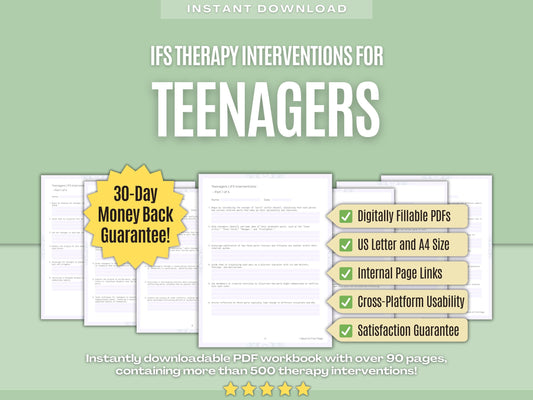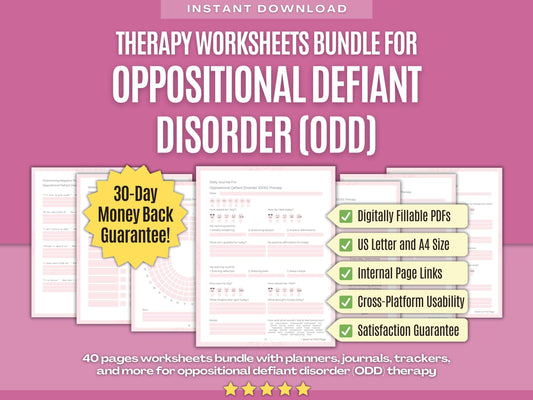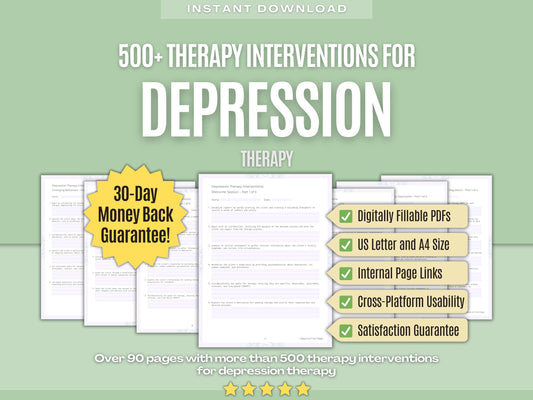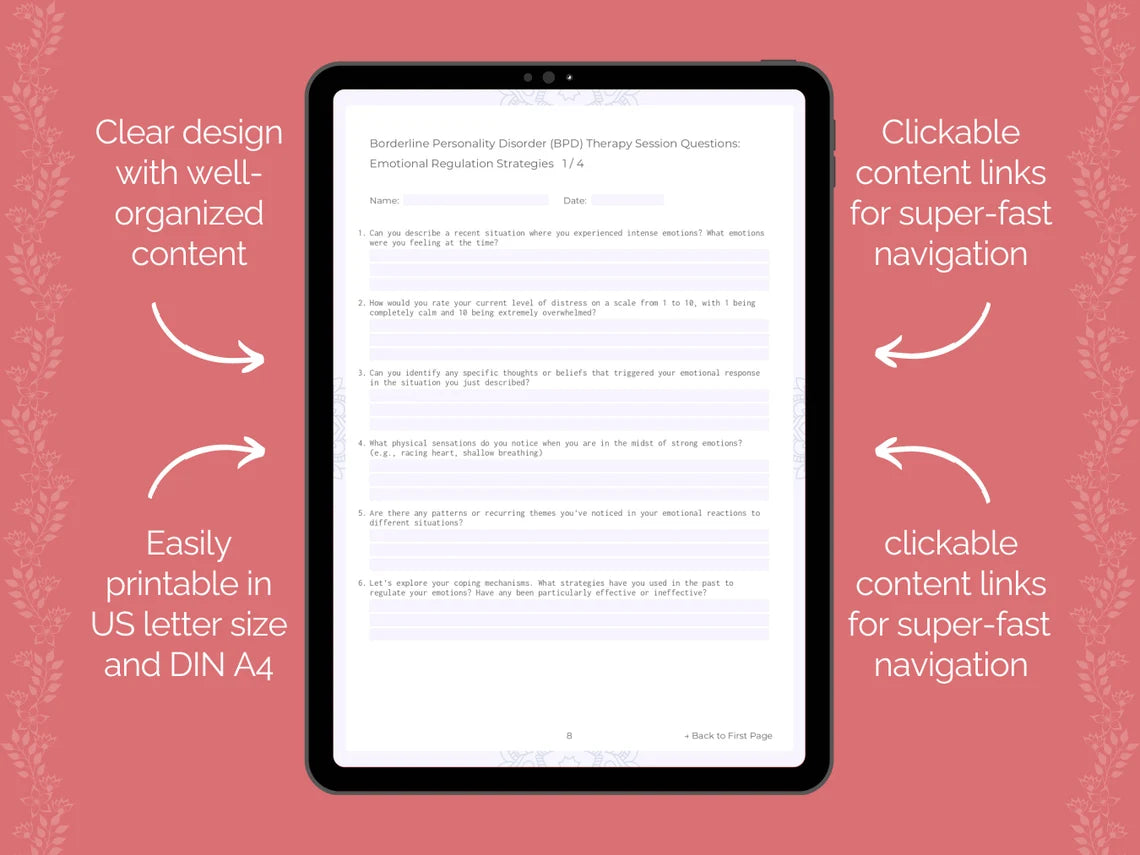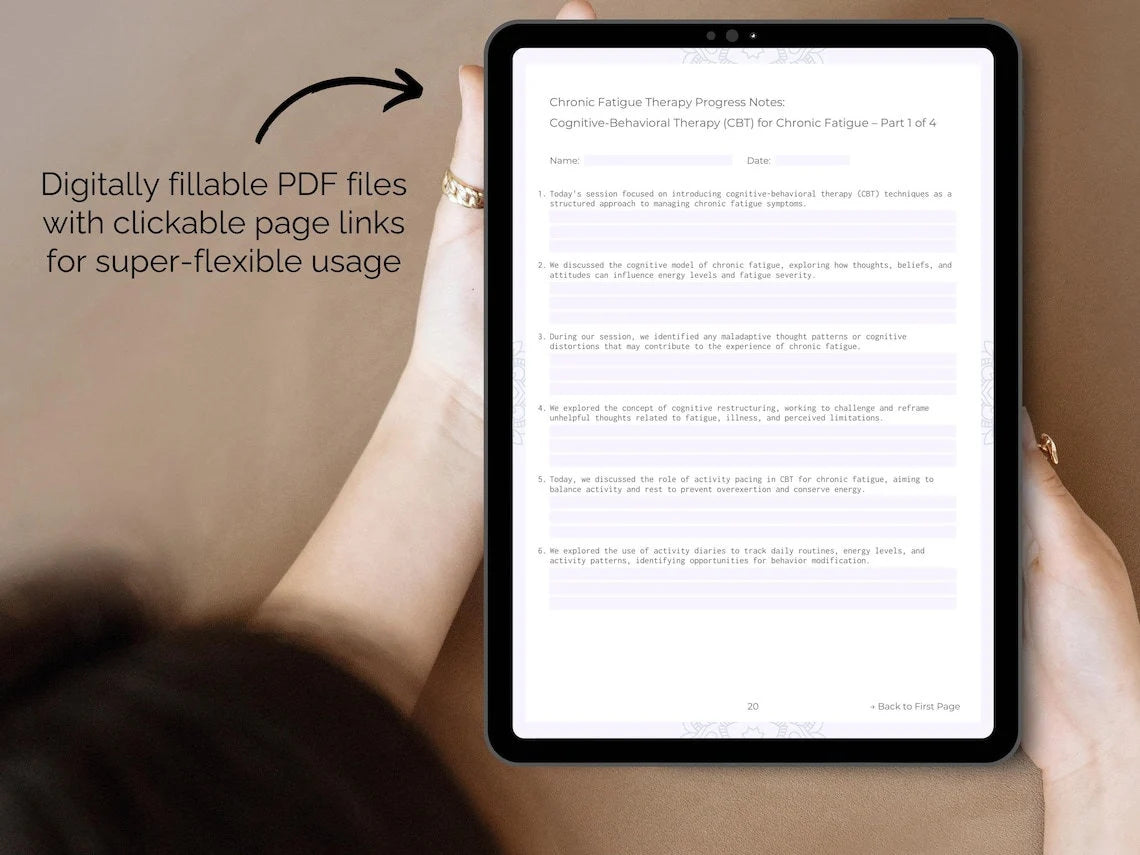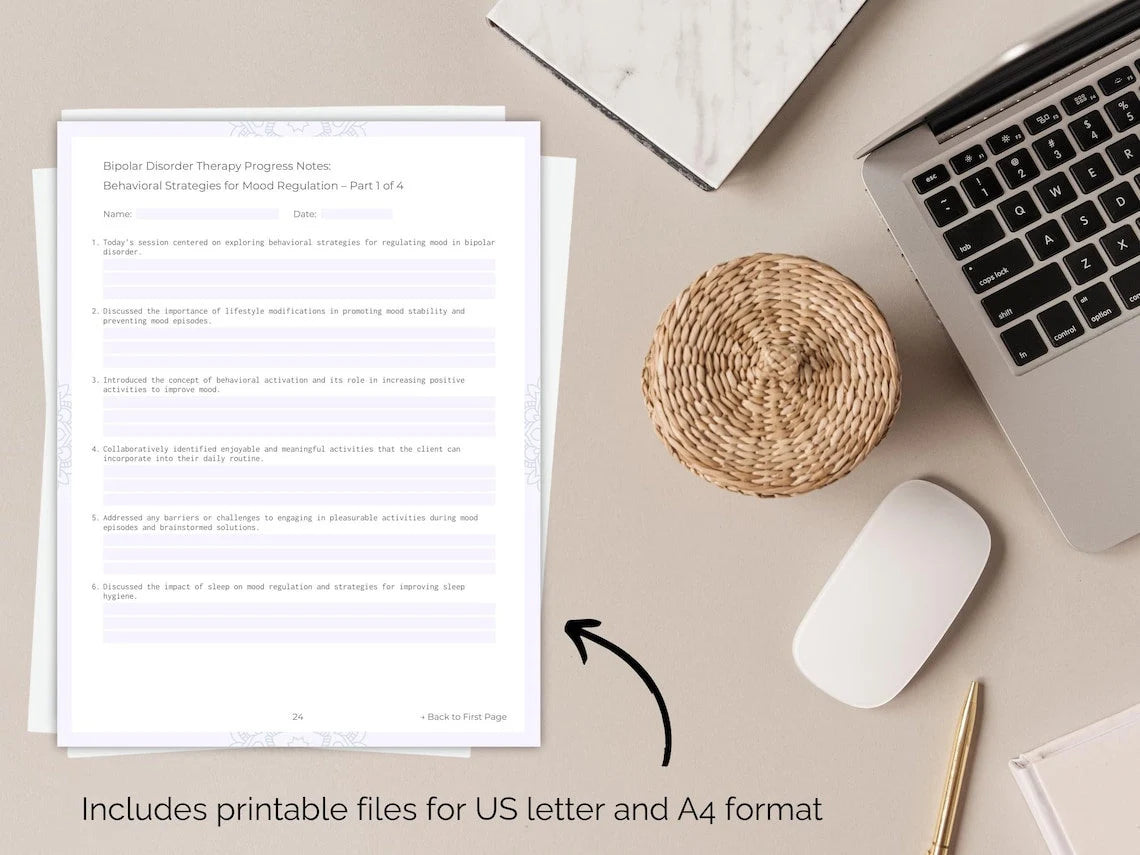Elevate Your Therapy and Guide Your Clients to Inner Healing with Our Borderline Personality Disorder (BPD) Coping Skills! ✨
1. Recognizing BPD Symptoms and Triggers
- Educate yourself about the symptoms and triggers associated with Borderline Personality Disorder (BPD) to increase self-awareness and understanding of your experiences.
- Attend therapy sessions regularly to explore underlying issues contributing to BPD symptoms and develop coping strategies tailored to your needs.
- Identify specific triggers for BPD symptoms, such as abandonment fears, rejection sensitivity, or perceived criticism, and develop coping plans for these situations.
- Engage in grounding exercises, such as focusing on sensory experiences or repeating affirmations, to reconnect with the present moment during times of distress.
- Practice distress tolerance skills like self-soothing activities, distraction techniques, or using imagery to visualize a safe place during moments of crisis.
- Build a support network of trusted individuals who can provide validation, empathy, and assistance during times of distress or crisis.
- Learn to recognize early warning signs of BPD symptoms, such as changes in mood, increased impulsivity, or heightened sensitivity to rejection.
- Set realistic expectations for yourself and others, recognizing that progress in managing BPD symptoms may be gradual and involve setbacks along the way.
- Utilize positive coping mechanisms like journaling, creative expression, or physical exercise to channel intense emotions in a healthy and constructive manner.
- Practice assertive communication skills to express your needs, boundaries, and emotions effectively in relationships while maintaining respect for others.
- Seek professional help or support from crisis hotlines or mental health resources if you are struggling to manage BPD symptoms or experiencing thoughts of self-harm.
2. Developing Emotional Regulation Skills
- Practice mindfulness techniques such as deep breathing exercises or body scans to anchor yourself in the present moment and observe your emotions without judgment.
- Utilize the STOP technique—Stop, Take a breath, Observe your thoughts and feelings, and Proceed mindfully—to interrupt impulsive reactions and respond more intentionally to emotional triggers.
- Use the DBT skill of checking the facts to challenge assumptions or interpretations of situations that may be fueling intense emotions, considering alternative perspectives and evidence.
- Practice self-soothing activities like taking a warm bath, listening to calming music, or wrapping yourself in a cozy blanket to comfort yourself during times of distress.
- Engage in activities that promote emotional expression and release, such as journaling, painting, or dancing, to process and cope with intense feelings.
- Use imagery or visualization techniques to create a mental safe space where you can retreat during times of emotional overwhelm, finding solace and refuge.
- Develop a crisis plan outlining steps to take when experiencing overwhelming emotions, including reaching out to trusted support systems or engaging in emergency self-care.
- Challenge perfectionistic tendencies by setting realistic expectations for yourself and accepting that mistakes and setbacks are opportunities for growth and learning.
- Practice gratitude by focusing on aspects of your life for which you are thankful, shifting your perspective from negativity to appreciation and fostering emotional resilience.
- Use positive self-talk and affirmations to counteract negative beliefs about yourself and your ability to cope with intense emotions, fostering self-confidence and empowerment.
- Seek out opportunities for social connection and support, whether through therapy groups, online forums, or trusted friends and family members who can provide validation and empathy.
3. Practicing Mindfulness and Distress Tolerance
- Begin by practicing mindful breathing exercises, focusing your attention on the sensation of your breath as it enters and leaves your body, grounding yourself in the present moment.
- Use the five senses grounding technique, where you actively engage each of your senses by focusing on sights, sounds, smells, tastes, and textures in your immediate environment.
- Practice non-judgmental awareness of your thoughts and emotions, observing them as passing phenomena without attaching labels of right or wrong.
- Develop distress tolerance skills by accepting the reality of your current circumstances, recognizing that while you may not control external events, you have agency over your response.
- Engage in paced breathing exercises, such as box breathing or 4-7-8 breathing, to activate the body's relaxation response and soothe the nervous system.
- Use the distraction technique to shift your focus away from distressing thoughts or emotions by engaging in activities that require your attention and concentration.
- Develop a list of self-soothing activities that provide comfort and relaxation, such as taking a warm bath, cuddling with a pet, or sipping a cup of tea.
- Practice the half-smile technique, where you gently curve your lips into a slight smile to activate the physiological response associated with positive emotions.
- Experiment with mindfulness apps or guided meditations to support your practice and deepen your understanding of mindfulness and distress tolerance techniques.
- Engage in progressive muscle relaxation exercises, systematically tensing and releasing muscle groups throughout your body to promote relaxation and reduce physical tension.
- Utilize grounding techniques, such as holding onto a textured object or repeating a comforting phrase, to anchor yourself in the present moment during times of distress.
4. Managing Intense Emotions
- Begin by practicing mindfulness techniques such as deep breathing or body scans to ground yourself in the present moment and alleviate distressing emotions.
- Keep a mood journal to track patterns in your emotions and identify triggers for intense mood swings.
- Use dialectical behavior therapy (DBT) skills such as distress tolerance techniques to manage overwhelming emotions without resorting to self-destructive behaviors.
- Practice self-compassion and challenge negative self-talk by replacing self-criticism with affirmations and reminders of your strengths.
- Develop hobbies or interests that provide a sense of purpose and fulfillment outside of relationships.
- Limit exposure to stressful or triggering situations when possible and prioritize self-care activities during times of heightened vulnerability.
- Practice distress tolerance skills like distraction techniques or self-soothing activities during moments of crisis.
- Engage in creative outlets such as art, music, or writing as a means of expressing emotions and processing experiences.
- Establish a consistent daily routine to provide structure and stability, which can help regulate emotions and reduce impulsivity.
- Practice radical acceptance by acknowledging and letting go of painful experiences or circumstances beyond your control.
- Build distress tolerance by gradually exposing yourself to triggering situations or emotions while using coping skills to manage discomfort.
5. Practicing Self-Compassion and Self-Care
- Begin by acknowledging and accepting your own humanity, recognizing that experiencing challenges and setbacks is a natural part of life.
- Challenge self-critical thoughts or beliefs by replacing them with affirmations and reminders of your inherent worth and value as a person.
- Cultivate self-awareness by reflecting on your thoughts, feelings, and behaviors without judgment or self-criticism.
- Develop a self-care routine that prioritizes activities and practices that nourish your mind, body, and spirit.
- Practice gratitude by focusing on the positive aspects of your life and expressing appreciation for the people, experiences, and opportunities that bring you happiness.
- Practice self-soothing activities such as taking a warm bath, listening to calming music, or practicing relaxation exercises to comfort yourself during times of distress.
- Cultivate a sense of purpose and meaning in your life by setting goals and working towards fulfilling your aspirations and dreams.
- Engage in activities that promote physical well-being, such as exercise, healthy eating, and adequate sleep, to support your overall health and vitality.
- Practice self-validation by acknowledging and accepting your thoughts, feelings, and experiences as valid and worthy of recognition.
- Seek out supportive communities or online forums where you can connect with others who understand and validate your experiences.
- Develop a crisis kit containing comforting items, grounding techniques, and reminders of coping strategies to use during moments of intense distress.
6. Navigating Impulsive Behaviors
- Begin by identifying triggers or patterns that contribute to impulsive behaviors, such as stress, intense emotions, or interpersonal conflicts, to gain insight into their underlying causes.
- Develop a crisis plan outlining coping strategies and support resources to use during moments of heightened impulsivity or distress, including reaching out to trusted individuals or mental health professionals.
- Use distress tolerance skills such as distraction techniques or self-soothing activities to manage intense emotions and impulses without resorting to harmful behaviors.
- Practice delay tactics or impulse control exercises to create a pause between the impulse to act and the actual behavior, allowing time to consider consequences and alternative responses.
- Challenge black-and-white thinking patterns that may contribute to impulsivity by considering alternative perspectives or interpretations of situations, recognizing shades of gray and complexity.
- Practice assertive communication skills to express your needs, boundaries, and concerns in relationships, reducing interpersonal conflicts or misunderstandings that may trigger impulsive reactions.
- Seek out therapy modalities such as dialectical behavior therapy (DBT) or cognitive-behavioral therapy (CBT) that specifically address impulsive behaviors and provide strategies for managing urges and cravings.
- Practice self-validation by acknowledging and accepting your emotions and experiences as valid, without judgment or self-criticism, to reduce the intensity of emotional arousal that may trigger impulsivity.
- Seek support from trusted friends, family members, or support groups who can provide validation, empathy, and guidance as you navigate challenges related to impulsivity.
- Develop a safety plan for managing high-risk situations or environments where impulsive behaviors are more likely to occur, including strategies for avoiding triggers and accessing support when needed.
- Develop a sense of self-efficacy and confidence in your ability to cope with distressing emotions or situations without resorting to impulsive behaviors, drawing on past successes and coping skills.
7. Creating a Personal Crisis Plan
- Begin by identifying potential triggers or warning signs that may indicate you are entering a crisis state, such as intense emotions, negative thought patterns, or changes in behavior.
- Develop a list of coping strategies and resources that have been helpful to you in managing distressing emotions or situations in the past, such as mindfulness techniques, relaxation exercises, or support from loved ones.
- Identify trusted individuals in your support network who you can reach out to for help and support during a crisis, such as friends, family members, or mental health professionals.
- Practice assertive communication skills to express your needs, boundaries, and concerns to others when seeking support during a crisis, advocating for yourself while also respecting the needs of others.
- Develop a safety plan outlining steps to take when experiencing thoughts of self-harm or suicide, including accessing emergency services, contacting a trusted individual for support, or engaging in coping strategies to manage intense emotions.
- Consider potential barriers or obstacles to implementing your crisis plan, such as financial constraints, transportation issues, or stigma around seeking help, and develop strategies for overcoming them.
- Share your crisis plan with trusted individuals in your support network, such as family members or close friends, so they are aware of how to best support you during times of crisis.
- Develop a crisis plan specifically tailored to address the unique challenges and triggers associated with borderline personality disorder (BPD), incorporating strategies from dialectical behavior therapy (DBT) or other evidence-based treatments.
- Consider creating a written or visual reminder of your crisis plan, such as a list of coping strategies or a collage of comforting images, to keep on hand during times of crisis.
- Explore alternative coping strategies or resources that you have not yet tried but may be helpful in managing crisis situations, such as online support groups, peer counseling, or self-help books.
- Develop a crisis plan for specific situations or triggers that you know are particularly challenging for you, such as interpersonal conflicts, financial stressors, or anniversary dates of traumatic events.
8. Building a Support Network
- Engage in regular therapy sessions to explore and address emotional challenges and develop effective coping strategies.
- Join a support group specifically tailored for individuals with BPD to share experiences, gain insights, and receive encouragement.
- Practice active listening when interacting with others, showing empathy, and validating their feelings.
- Seek out mentors or role models who have successfully managed BPD symptoms and learn from their coping techniques.
- Explore alternative forms of therapy such as art therapy, music therapy, or mindfulness-based practices to express emotions and reduce stress.
- Practice relaxation techniques such as deep breathing exercises, progressive muscle relaxation, or guided imagery to calm the mind and body.
- Reach out to mental health professionals or crisis hotlines during times of distress for immediate support and guidance.
- Develop a list of distraction techniques such as watching a movie, listening to music, or engaging in a hobby to shift focus away from negative thoughts.
- Practice self-compassion and forgiveness, recognizing that setbacks are a natural part of the recovery process.
- Engage in spiritual or religious practices that provide comfort, guidance, and a sense of purpose.
- Surround yourself with positive influences by limiting exposure to toxic relationships or environments.
9. Planning for Recovery and Wellness
- Begin by setting realistic and achievable goals for your recovery journey, focusing on small, measurable steps that align with your values and aspirations.
- Identify and challenge negative thought patterns and self-limiting beliefs that may hinder your progress towards recovery and wellness.
- Cultivate a sense of self-compassion and acceptance, acknowledging that setbacks and challenges are a natural part of the recovery process.
- Utilize relaxation techniques such as deep breathing exercises, progressive muscle relaxation, or guided imagery to reduce anxiety and promote a sense of calm.
- Build a strong support network of trusted friends, family members, and healthcare professionals who can offer encouragement, guidance, and assistance when needed.
- Develop coping strategies for managing emotional dysregulation, such as grounding techniques, distraction methods, or expressive arts therapies.
- Practice assertive communication skills to express your needs, set boundaries, and advocate for yourself in relationships and interactions with others.
- Engage in dialectical behavior therapy (DBT) or other evidence-based treatments specifically designed for individuals with BPD to learn effective coping skills and emotional regulation techniques.
- Foster a sense of gratitude and appreciation for the progress you've made in your recovery journey, recognizing your resilience and courage in facing challenges head-on.
- Practice forgiveness and let go of resentments or grievances that may weigh you down and impede your progress towards recovery and wellness.
- Explore opportunities for personal and professional development, such as continuing education, career advancement, or creative pursuits that align with your interests and goals.
10. Celebrating Achievements and Personal Growth
- Reflect on your journey and acknowledge the progress you've made, no matter how small or incremental it may seem.
- Practice self-compassion by treating yourself with kindness and understanding, especially during times of struggle or setbacks.
- Create a visual representation of your accomplishments, such as a journal, vision board, or milestone tracker, to remind yourself of how far you've come.
- Set aside dedicated time for reflection and self-assessment, reviewing past challenges and identifying areas of personal growth and development.
- Engage in activities that bring you joy and fulfillment, whether it's treating yourself to a favorite meal, indulging in a hobby, or pampering yourself with self-care.
- Practice positive self-talk and affirmations to reinforce feelings of self-worth and confidence in your ability to overcome challenges.
- Share your success story with others who may be struggling, offering hope and inspiration to those who are still on their own path to recovery.
- Celebrate the progress of others in your support network, recognizing that their achievements are a reflection of the collective strength and resilience of the community.
- Cultivate a sense of pride in your accomplishments, recognizing that your journey of healing and growth is a testament to your courage and determination.
- Surround yourself with positive influences and environments that nurture your personal growth and well-being.
- Honor your resilience and perseverance in the face of adversity, recognizing that every challenge you've overcome has contributed to your strength and character.
We hope that our coping skills for Borderline Personality Disorder (BPD) therapy will help you to elevate your therapy practice and guide your clients to inner healing! Do you need more coping skills for Borderline Personality Disorder (BPD) therapy? Find them all in our Digital Workbook! Or do you have any questions or suggestions for us? Please feel free to contact us at any time!
